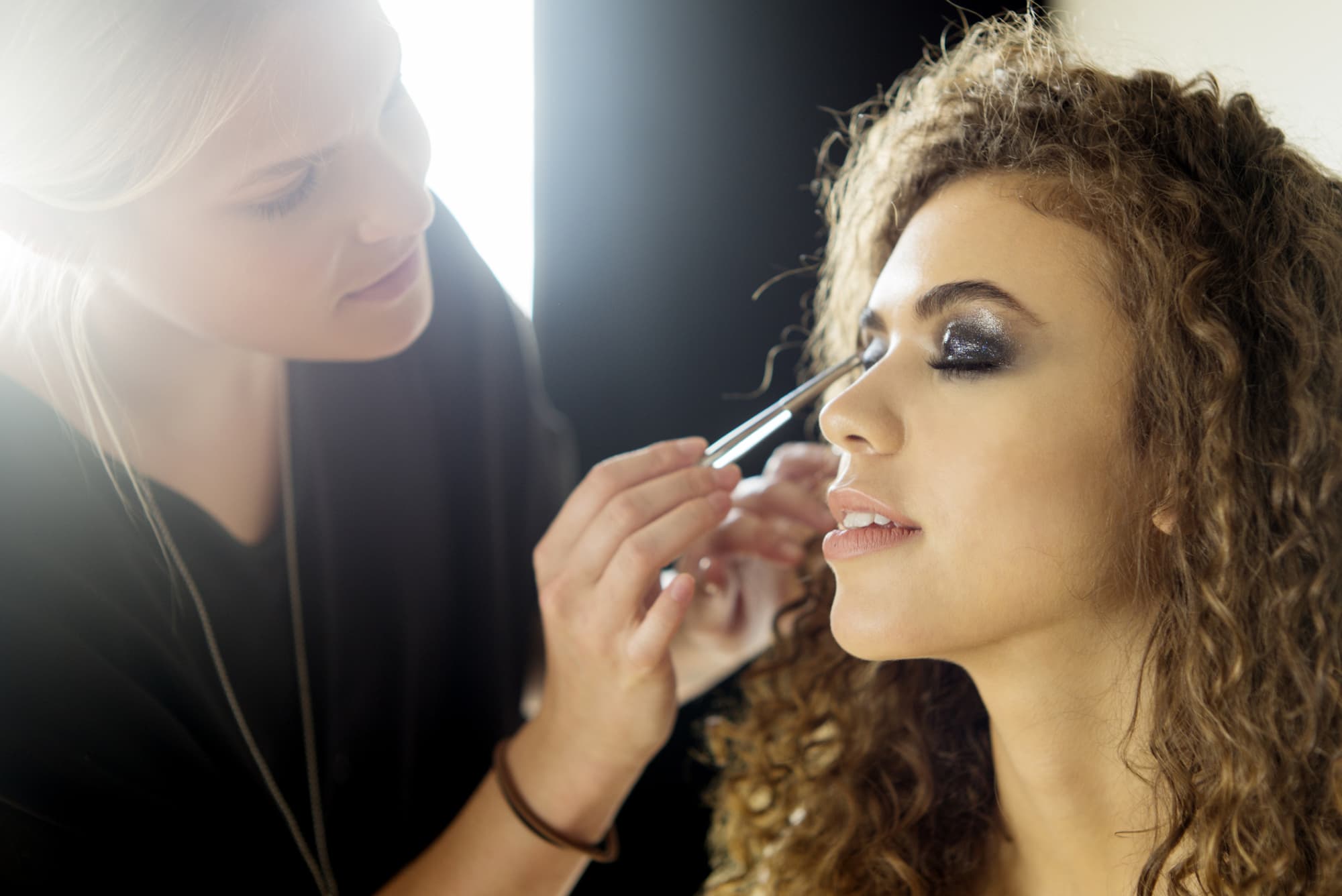The following article discusses the latest career and salary outlook, how to become a cosmetologist, and cosmetology schools. The final section offers prospective students helpful outside resources. Consult a state licensure board website to learn more about cosmetologist jobs and how to enter the profession. Admissions advisors help applicants pick the right program.
Questions About Becoming a Cosmetologist
Do cosmetologists make good money?
In general, cosmetologist jobs bring in significantly less than the U.S. median salary. However, experienced professionals make much more than recent cosmetology school graduates.
How many years does it take to become a cosmetologist?
Cosmetology programs feature 1,000 hours of hands-on training. Many people become a cosmetologist in just two semesters. Part-time learners may need longer to graduate.
Can you make a living off cosmetology?
Many cosmetologists, especially those working in large metropolitan areas, struggle to make a living. Workers not only earn under the U.S. median salary, but must also buy equipment and rent a booth.
Are cosmetologists in high demand?
The Bureau of Labor Statistics (BLS) projects the need for cosmetologists to grow significantly in 2020-2030. A high growth rate means more open cosmetologist jobs and a higher starting salary for recent cosmetology school graduates.
What Do Cosmetologists Do?
Like barbers and hairstylists, cosmetologists cut and style hair. Other typical tasks include disinfecting tools and applying chemicals to change hair texture. Customers pick these and other services from a menu. Cosmetologists communicate with customers to ensure the final product matches their expectations. Cosmetologists earn a salary, along with customers’ tips.
Cosmetologist jobs feature unique responsibilities, such as applying special treatments to the face and scalp. Other duties include recommending hair care products to clients. Most professionals work in a barbershop or a salon alongside hairdressers. Other coworkers manicure customers’ nails or keep track of business operations.
Options for career growth include opening an independent salon or related business. Doing so requires many years of experience and maintaining a state-issued business license. Other professionals earn more by working for more than one salon or specializing in many hair treatments. These services include hair coloring and straightening.
Career and Salary Outlook for Cosmetologists
The BLS reports that cosmetologist jobs earn a median $27,630 annual salary. The typical U.S. worker makes about $14,000 more. Cosmetologists increase their salary potential by choosing the right employer. Personal care services companies pay more than the profession’s median salary. Retail trade barbershops that include chain stores pay somewhat less.
Location also affects salary. Top-paying states for cosmetologist jobs include Massachusetts, Washington, and the District of Columbia. Those who become a cosmetologist in these areas earn $42,270-$46,310. A typical day involves helping scheduled and walk-in customers with their styling needs. Some professionals specialize in applying wigs, extensions, and other hairpieces.
How to Get Hired as a Cosmetologist
To become a cosmetologist, individuals must graduate high school or pass the GED. Those needing to take the GED enter an affordable preparation class at a local community or junior college. Many of these schools administer the GED for class graduates. Other education requirements may apply, depending on the state and cosmetology school.
Individuals use their diploma or GED to enroll in a cosmetology school. State-accredited programs prepare learners for a cosmetology license. Coursework covers haircutting fundamentals, color and texture, and basic skincare. Students learn how to create a resume, search for cosmetologist jobs, and provide excellent customer service.
Successful cosmetologist job-seekers offer many in-demand skills, such as customer service, time management, and tidiness. Employers demand tidiness, as businesses must maintain a clean work environment. Some state licensing boards reject applicants with a criminal record. These boards may post a list of disqualifying crimes on their website.
What Are the Education Requirements for a Cosmetologist?
Cosmetologists-in-training must meet specific requirements to qualify for a state-issued license. High school graduates become a cosmetologist by enrolling in a cosmetology school. Coursework and hands-on experiences let them sit for the licensure exam. Please keep in mind that the experiences described below vary by state, school, and individual.
Cosmetology schools require a high school diploma or GED. Both show that applicants hold the skills necessary to succeed in a cosmetology program and career. A high school education’s other benefits include transferable skills, an advantage for workers wanting to switch jobs. This requirement limits applicants to those 18 years and older.
Individuals with a high school diploma or GED apply to cosmetology school. Many schools offer virtual and in-person enrollment seminars. Prospective students then meet with an enrollment counselor to discuss financial aid and pick a start date. Other admission requirements may include a recommendation letter, personal statement, and exam.
Cosmetology students spend 27-30 hours per week taking core and elective classes. Hands-on experiences train learners in using cosmetology products. Graduation requirements may include an externship, where students work at a local salon. Externships help learners apply their skills in a real-world setting and network with potential employers.
To become a cosmetologist, students need to complete a specific number of training hours to qualify for a license. California requires 1,000 hours for cosmetologists and barbers. Related professionals, including manicurists, need fewer hours. States post this information on their board of licensure website. Check a state board website often, as requirements may change without warning.
Licensure candidates earn hours during an externship, internship, or postgraduate apprenticeship. Meeting this requirement may take 6-12 months, depending on how many hours individuals work weekly. Fortunately, many top cosmetology schools help learners complete all hours while in school. Visit programs’ websites or speak with an enrollment counselor for more information.
The last step before earning a license involves passing a state-specific exam. Licensure candidates submit an exam request form to their state board. Candidates retaking the exam may need to complete a different form. California’s cosmetology exam assesses candidates’ knowledge of scientific concepts, hair care, skincare, and nail care. The state offers sample questions to help candidates prepare for test day.
As of March 2022, California test-takers pay $125 in exam fees and choose from two testing sites. The state offers the exam every weekday. Licensed cosmetologists do not take continuing education (CE) classes for renewal. They only pay a $50 renewal fee.
Certification and Licensure for Cosmetologists
Certifications like those below help professionals qualify for more cosmetologist jobs aligning with their career goals. They may also increase salary potential. Typical certification requirements include professional experience and examination. Some require renewal. Use the embedded links to learn more about the following cosmetology certifications.
The Art Institute of Makeup awards the professional makeup artist certification to professionals who complete a 60-hour program. The prProfessional Makeup Certification – Art Institute of Makeup – Makeup School | MUA in Chicagoogram emphasizes infection control, client consultations, bridal makeup techniques, and camouflage makeup. Certified professionals work as an image consultant or freelance makeup artist. The Art Institute of Makeup offers additional certifications at affordable prices.
Makeup Academy’s master makeup artistry certification appeals to inexperienced professionals wanting to improve their skills. The two-month class includes lessons in skin preparation, full makeup applications, and makeup for the entertainment industry. Students learn from instructors and tutors with entertainment industry experience. Master makeup artistry does not require renewal.
The National Coalition of Estheticians Association awards this certification to candidates who take a self-study class and pass an exam. Coursework covers role-modeling, skin types, and precautions to treatment. Candidates take the computerized exam at home. Professionals complete online or in-person CE classes to maintain their certification.
Resources for Cosmetologists
NIC features the latest information on each state’s cosmetology licensure requirements. Other resources for visitors include information on reciprocity agreements, exam preparation, COVID-19 safety protocols, and relevant laws.
Elite Learning’s cosmetology resource center provides new and experienced professionals with informative blog posts. The latest articles cover service pricing, self-employment tips, and self-care advice. Other resources include links to CE classes.
Prospective students turn to AACS to find the right cosmetology school. Resources for learners include scholarship opportunities, career-planning advice, and school guides. AACS uses membership fees to advocate for cosmetologists at the federal and state levels.
AHP provides members with CE classes, liability insurance, discounts on equipment, and career toolkits. Members also get a free website to advertise their services and create a professional portfolio.
Photo Credit: Roy JAMES Shakespeare, Getty Images





